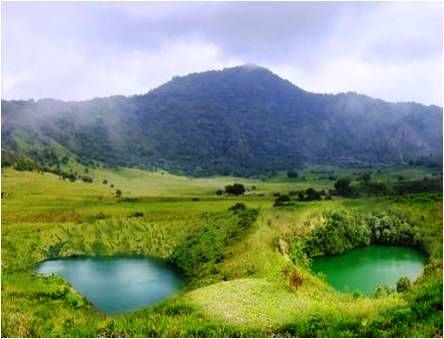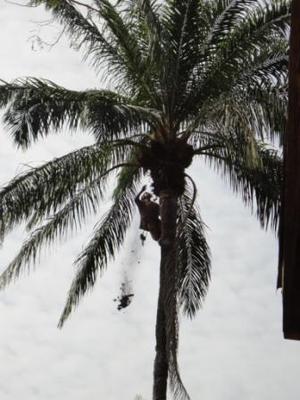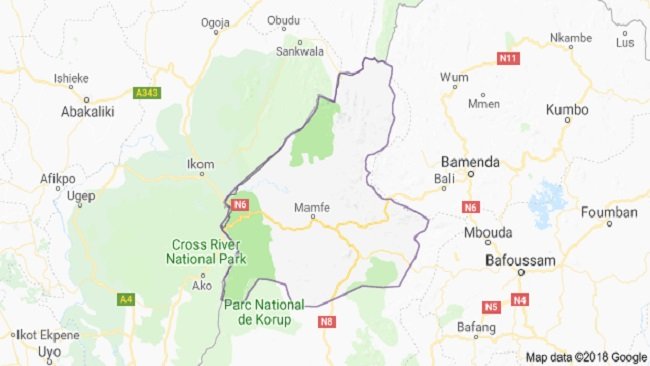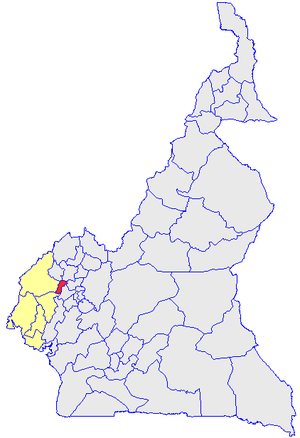Kupe Muanenguba
Kupe Muanenguba is found in the South West Region of Cameroon. The Division covers a total surface area of 3,404 km². As of 2005, it had a total population of 105,573 inhabitants. Bangem is the Divisional capital.

Fun Facts About This Place
- Home of the Bakossians and other tribes.
- They inhabit one of the picturesque areas of the region with beautiful mountains, Lakes and national reserves.
- In the course of research, I learned if you throw a stone into the lake, don't be surprised to see the same stone thrown back at you.
The area is inhabited by the Balong, Bakossi, Bassosi and the Mbo people. History has it that, these people share the same ancestors as descendants of Ngoe who got married to Sumediang and they both had seven sons and lived in Muekan, around the western part of the Muanenguba Mountains. It is said that, a supernatural being at one time warned the couple about a flood that was coming and asked them to make box in which to escape. The couple built an ark, taking in all their family and all kinds of animal.
Fortunately for them, they survived the flood. The ark came to rest between the twin lakes of Muanenguba. One of these lake is said to have a male character and the other a female. The different clans in this Division descended from the children and grandchildren of the couple. They all speak the Bantu language.
Climate
It has two distinct seasons. The rainy season which runs from April to October with average rainfall of approximately 3,000 mm. Rainfall is high during this period. The dry season on the other hand starts from November to March with minimum and maximum temperatures of about 10⁰C and 30⁰C respectively, especially on the slopes of Mt Kupe and the twin lakes of Muanenguba. The favourable climate is conducive for the cultivation of crops.
Relief
The area has an outstanding relief with altitude which ranges from 200 to 2,396 m above sea level. The Division consist of two mountains which are of volcanic origin and are extinct volcanoes. They include Mount Kupe which is 2,050 m and Mount Muanenguba which is 2,396 m. The slopes of these mountains contain volcanic soils which are very fertile and support the cultivation of crops and a dense tropical forest.
Hydrology
The area has twin lakes, Rivers, streams and springs. It has about 5 major Rivers with smaller streams emptying in to them. River Chide and Chunge River are most important in the South-western part. River Chide moves Southwest to meet with River Mungo.
Vegetation
The area is dominated by a dense equatorial forest. Most of these forest are highly protected and include Mbayang Mbo forest reserve, Mount Kupe, Ekanjo Bajoh-Epen and Etam forest reserve. Industrial plantations and small-scale farms have resulted from some parts of the forest such as C.D.C which is the biggest agricultural plantation in the area and occupies a very large area of land. Logging companies also carry out extensive timber exploitation from these forest.
Resources
The Division has stone quarries, Poozzolana quarries, stone quarries, local mineral water sources and iron ore. Panja pepper is cultivated as a cash cropalong the volcanic flanks of Mount Kupe Muanenguba as a result of fertile soils and favourable climate.
Food crops cultivated in this area include cassava, sweet yams, cocoyam, maize, bananas, plantain, okra and beans. The Division is the highest producer of plantain in the country and mile 20 market in Tombel is the biggest plantain market in central African region. The cash crops in this Region include oil palm, cocoa, coffee, rubber and tea. The Nninong and Elung clan are the highest in coffee production in the area. Ngusi and Ebonji produce the highest cocoa in Tombel, Bajoh clan is the highest in Bangem and Badun, Nogomadeba, Babubock and Mungo Ndoi are the highest in Nguti sub division. Small-scale rearing of cows, goats, sheep, pig horses and poultry are mostly for family consumption and ceremonies.
The Division is regarded as an ecotourism cornucopia due to the rich biodiversity both in flora and fauna. The Division has a beautiful terrain and the famous twin lakes (male and female) that add a lot of meaning to the cultural mix. There is also the Bakossi National Park, Mt Kupe and Muanenguba which are good tourist sites.
Sub Divisions
This Division is made of three sub divisions which include:
- Bangem : It is the capital of the Division and consist of 93 towns and villages which belong to eight main clans. These clans include Bangem, Nninong, Elung, Bajoh, Ebamut, Nhia, Muatan, and Muambong clans.
- Nguti : It is made of 74 villages and towns spread in four main clans. The clans are, Bakossi with 9 villages, Upper Balong having 8 villages, Bassosi with 11 and Mbo with 26 villages. The ethnic groups are further split in to 9 clans and include the Bebum, Bassosi, Aboh Agoe, Upper Balong, Bangue, Ngemengoe, Lower Mbo, Upper Nkongho and Nkongho Mbeng.
- Tombel :
It has five main clans with 72 villages and towns. The clans include Ebonji. Nyando, Nyasoso, Etam and Ngusi.


